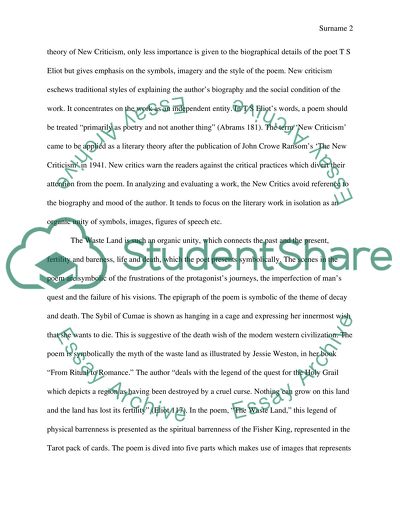Cite this document
(“Analysis of the Poem The Waste Land by T S Eliot Essay”, n.d.)
Retrieved de https://studentshare.org/literature/1429251-new-criticism-analysis-of-a-poem
Retrieved de https://studentshare.org/literature/1429251-new-criticism-analysis-of-a-poem
(Analysis of the Poem The Waste Land by T S Eliot Essay)
https://studentshare.org/literature/1429251-new-criticism-analysis-of-a-poem.
https://studentshare.org/literature/1429251-new-criticism-analysis-of-a-poem.
“Analysis of the Poem The Waste Land by T S Eliot Essay”, n.d. https://studentshare.org/literature/1429251-new-criticism-analysis-of-a-poem.


